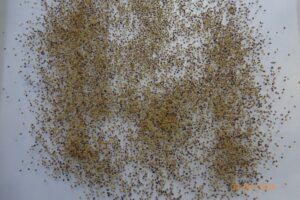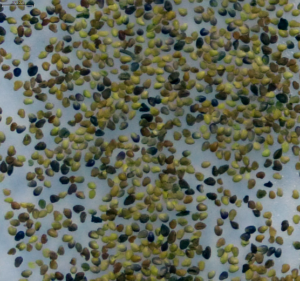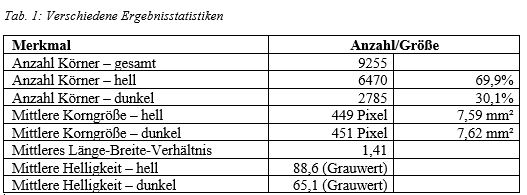

Grain Count of a Seed Mixture
Various process steps, such as the purification or drying required in the context of seed breeding or production, rais analytical questions for individual components of a seed mixture: what is the ratio of the individual types of this specific mix, or what is the relationship between the seed sizes of the different varieties?
Many of these questions can be answered qualitatively well by visual inspection, but only a more in-depth quantitative analysis allows for further process optimization and automation for large quantities.
RGB Data for Single Grain Extraction
To characterize this cognitive-quantitative analysis in the field of agriculture, the Tama Group has made an example of the automatic detection of grains of a lens-sown-seed mixture. The aim of the automatic detection was the creation of individual objects, the calculation of the proportion of dark grains in the total number and the statistical coverage of different grain features. For this purpose, the automated extraction of individual grains on a white background was carried out on the basis of a photo of a digital camera.



Process Optimization through Tama Group Methodology
A challenge for the automatic grain extraction in this example is mainly dense grain clusters, which make the detection of single grains difficult; nevertheless, meaningful results could be achieved by using high-performance algorithms. Comprehensive statements on the grain characteristics can be made with the help of the combination of grid-based additional information as well as form and neighborhood criteria. A few examples can be found in the adjacent table.
Feel free to contact us for more information.